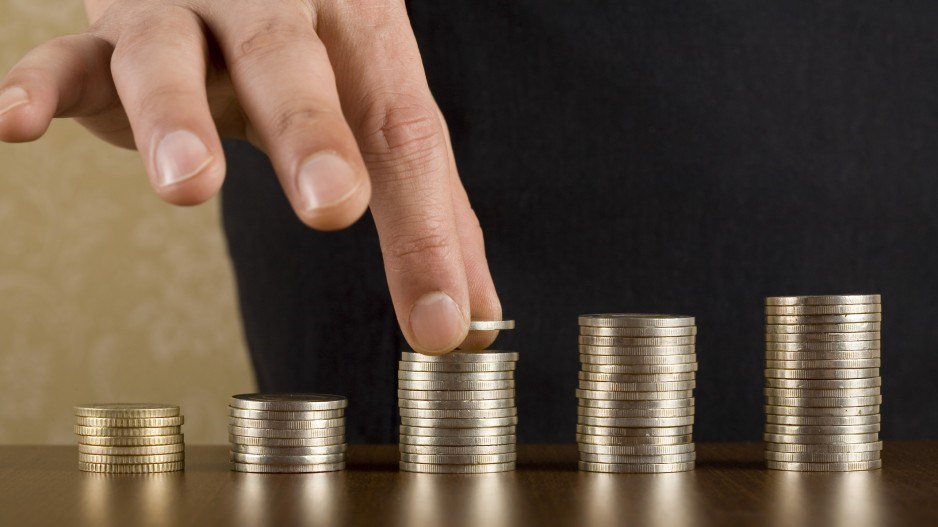Canadian living standards are slipping. Most people can see or feel that intuitively. Whether it’s how far our paycheque stretches after inflation, buying groceries or a home to raise a family, filling up our car during the school run, staring at our mortgage account statements, taking stock of the taxes we pay, wanting our child to go to an actual school rather than a makeshift portable classroom (even in newly-opened schools!), or praying we can see a doctor in time to receive the treatment we need, the signs of slippage in our living standards are all around.
Our economy is simply not as efficient or productive as it could be, nor is it generating the real income per person needed to sustain our standard of living.
Economic data confirm our experiences on the ground. According to Statistics Canada data for the first quarter of 2023, Canadian real GDP per person is now $55,677, down by 1.2 per cent since 2019 Q2. This reflects a precipitous drop in 2020 during the pandemic, followed by a weak recovery in 2021-22. That partial recovery ran out of steam by mid-2022. Canada is one of the few advanced countries that has not recovered its pre-pandemic level of per capita GDP.
Young Canadians entering the workforce today face 40 years of near-stagnant average real incomes. The OECD projects that Canada (and by extension B.C.) will be the worst performing economy out of 38 advanced countries over both 2020-30 and 2030-60, with the lowest growth in real GDP per person.
Canada is on track to meet these dismal projections. To generate near-term forecasts for GDP per capita, we can use the 2023 Federal Budget forecasts for annual GDP growth over 2023-27, and then subtract an assumed population growth rate of 1.8% per annum. The latter was the pre-pandemic population growth rate over 2018-19. (It is, however, well below the blistering population growth rate of 2.7% in 2022 – which may imply our forecasts for GDP per capita should be even lower!)
Under these assumptions, Canadian annual GDP per capita would reach $55,531 in 2027, still 1.2% below its pre-pandemic level in 2019, and only 0.6% above its level in 2017.
What about British Columbia? Real GDP per capita peaked at $53,769 in 2019 before dropping to $51,563 during the pandemic. Unlike Canada, B.C.’s GDP per capita did fully recover its pre-pandemic level, reaching $54,277 in 2021. Nonetheless, this was still below the national average (which, as noted above, less than fully recovered from the pandemic).
The 2023 B.C. Budget provides forecasts for provincial real GDP per capita over 2022-27. B.C.’s GDP per capita is expected to fall in 2023 and 2024. By 2027, it is expected to be $54,289, 0.4% below its estimated 2022 level.
Thus far, policymakers have largely ignored these realities. For example, the Trudeau government was so alarmed by Chart 28 of the 2022 Federal Budget (pages 25-26) – showing Canada dead last in the OECD for growth in real GDP per capita over 2020-60 – that it took bold and decisive action: it scrubbed any mention of the issue from its 2023 Federal Budget.
But the post-pandemic policy environment is unforgiving.
Advanced countries are grappling with runaway inflation. This follows several years of justifiably massive (during 2020) and then unjustifiably excessive and sustained (during 2021-2022) fiscal and monetary policy stimuli for consumer and housing demand. The St Louis Federal Reserve estimates that, for Canada, 2.5 percentage points of “excess inflation” (defined as annual CPI inflation in February 2022 less the 2015-19 inflation average) was due to domestic fiscal stimulus and another 3.1 percentage points was due to the indirect effects of foreign fiscal stimulus (especially from the U.S. and Mexico) through import and export prices.
After initially misjudging high inflation as “transitory,” central banks have sharply hiked interest rates. They are also unwinding their bloated balance sheets after buying massive quantities of government bonds over 2020-21. Governments are thus more exposed to credit ratings agencies who stand ready to downgrade government debt ratings if they see fiscal wobbles, resulting in higher public borrowing costs, as recently happened in B.C.
All of this means that governments’ leeway to offer “sugar pops” policies – keeping our economy buzzing on a diet of stimulus and credit – is largely gone. This decade, unlike the previous decade, we won’t be able to rely on governments for freewheeling spending, near-zero interest rates, endless credit expansion and inflation of real resale home prices to make us feel more prosperous.
As real incomes slip and stagnate, there may come a time, soon, when our political class have to face up to our economy’s inability to generate gains in average real incomes.
The music hasn’t stopped, yet – but it has certainly slowed.
David Williams, DPhil, is Vice President of Policy at the Business Council of British Columbia




